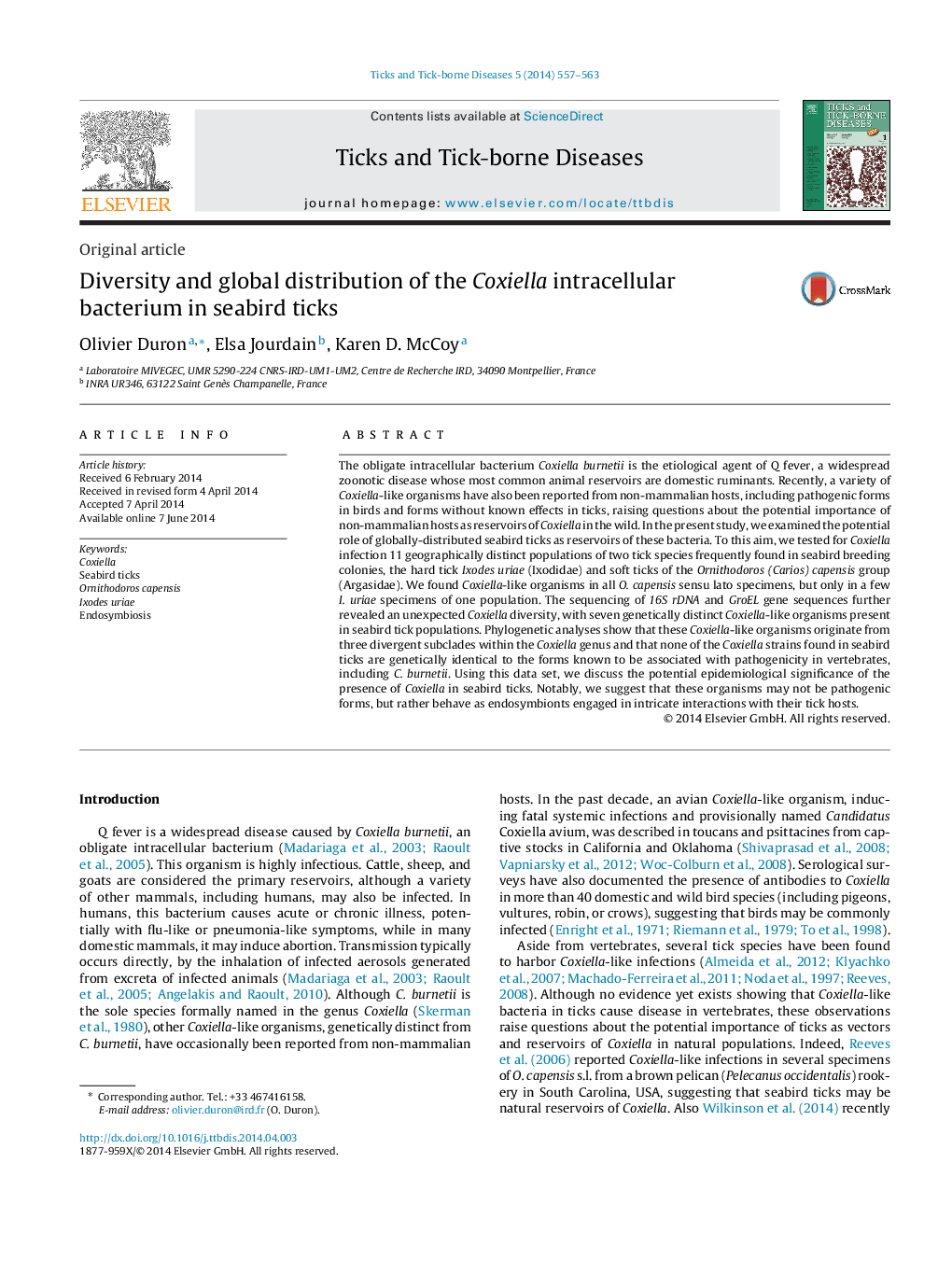| کد مقاله | کد نشریه | سال انتشار | مقاله انگلیسی | نسخه تمام متن |
|---|---|---|---|---|
| 2474054 | 1113111 | 2014 | 7 صفحه PDF | دانلود رایگان |

The obligate intracellular bacterium Coxiella burnetii is the etiological agent of Q fever, a widespread zoonotic disease whose most common animal reservoirs are domestic ruminants. Recently, a variety of Coxiella-like organisms have also been reported from non-mammalian hosts, including pathogenic forms in birds and forms without known effects in ticks, raising questions about the potential importance of non-mammalian hosts as reservoirs of Coxiella in the wild. In the present study, we examined the potential role of globally-distributed seabird ticks as reservoirs of these bacteria. To this aim, we tested for Coxiella infection 11 geographically distinct populations of two tick species frequently found in seabird breeding colonies, the hard tick Ixodes uriae (Ixodidae) and soft ticks of the Ornithodoros (Carios) capensis group (Argasidae). We found Coxiella-like organisms in all O. capensis sensu lato specimens, but only in a few I. uriae specimens of one population. The sequencing of 16S rDNA and GroEL gene sequences further revealed an unexpected Coxiella diversity, with seven genetically distinct Coxiella-like organisms present in seabird tick populations. Phylogenetic analyses show that these Coxiella-like organisms originate from three divergent subclades within the Coxiella genus and that none of the Coxiella strains found in seabird ticks are genetically identical to the forms known to be associated with pathogenicity in vertebrates, including C. burnetii. Using this data set, we discuss the potential epidemiological significance of the presence of Coxiella in seabird ticks. Notably, we suggest that these organisms may not be pathogenic forms, but rather behave as endosymbionts engaged in intricate interactions with their tick hosts.
Journal: Ticks and Tick-borne Diseases - Volume 5, Issue 5, September 2014, Pages 557–563